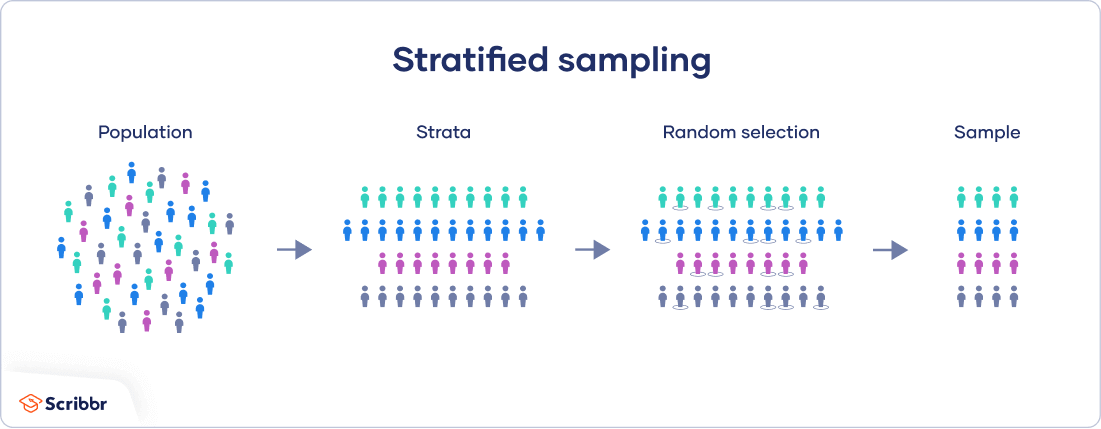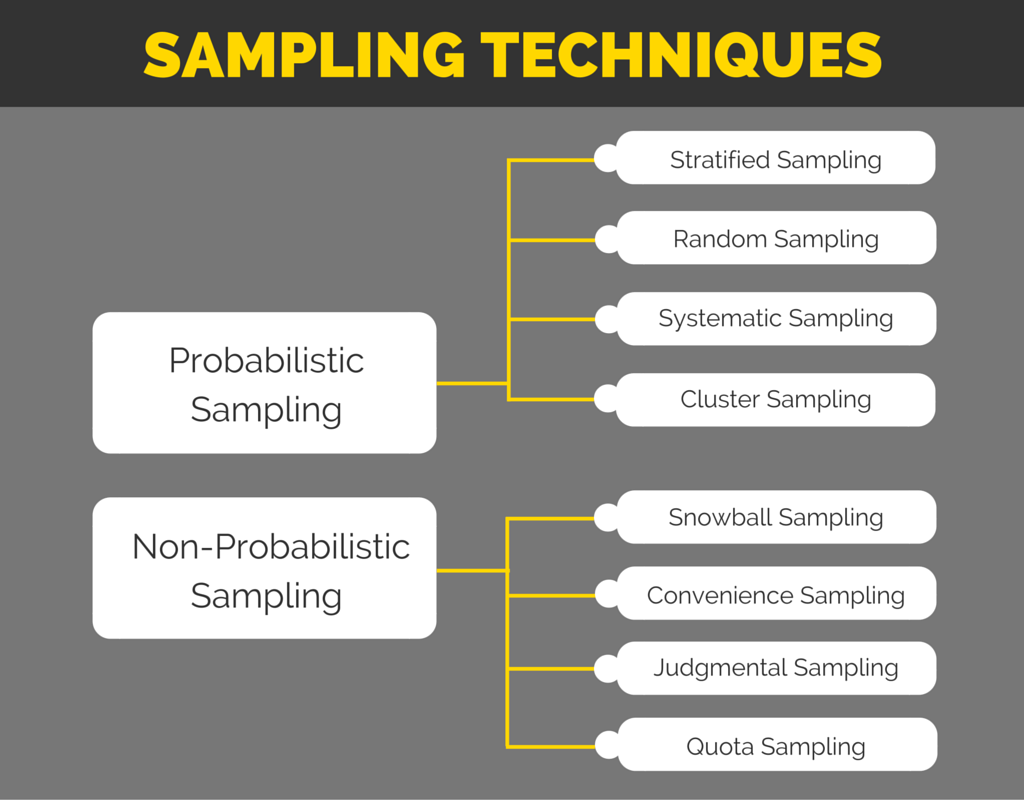Stratified Random Sampling In Quantitative Research | Proportional stratified sampling always produces the same number of sampling errors as simple random sampling, or fewer. Stratified random sampling is used instead of simple random sampling when the categories of the strata are thought to be too distinct and too resources. They have used stratified sample. This video describes five common methods of sampling in data collection. Stratified random sampling is a method for sampling from a population whereby the population is divided into subgroups and units are randomly selected from the subgroups.
In statistical surveys, when subpopulations within an overall population vary, it could be advantageous to sample each subpopulation (stratum) independently. In my research, i have selected my participants from two universities, the selection of universities have been on convenient sampling, though almost equal number of subgroups(efl undergraduates, efl post. Stratified sampling, also sometimes called quota sampling, is akin to systematic sampling in that a but in stratified sampling the nm are not predetermined but are chosen so as to minimize the variance researchers in the rr field automatically extended the available results on randomized. To stratify this sample, the researcher would then randomly select proportional amounts of people from each age group. False in all types of sampling, sampling error, the difference between the sampling in research may be defined as:

In stratified sampling, a sample is drawn from each strata (using a random sampling method like simple random sampling or systematic sampling). Stratified sampling involves dividing the population into subpopulations that may differ in important ways. All papers are for research and reference purposes only. Each different sample might produce a different estimate of the value of a population parameter. Stratified sampling stratified sampling is a modification of random sampling. When completing analysis or research on a group of entities with similar characteristics, a. For stratified random sampling, we get to choose the sample size for each stratum. (b) the population is divided into groups of units that are similar on some characteristic. Designing and conducting health systems research projects: Proportional stratified sampling always produces the same number of sampling errors as simple random sampling, or fewer. Stratification of target populations is extremely common in survey sampling. Stratified random sampling is a method for sampling from a population whereby the population is divided into subgroups and units are randomly selected from the subgroups. The function selects stratified simple random sampling and gives a sample as a result.
What are the distinctions between stratified random sampling and cluster sampling? Using the formulas above, it is possible to demonstrate that these different stratification methods only reduce the sample size if the values p and σ vary between strata. Stratified sampling involves dividing the population into subpopulations that may differ in important ways. Sampling is a method that allows researchers to infer information about a population based on results from a subset of the population. In my research, i have selected my participants from two universities, the selection of universities have been on convenient sampling, though almost equal number of subgroups(efl undergraduates, efl post.

Describe how probability sampling differs from nonprobability sampling. What are the distinctions between stratified random sampling and cluster sampling? Quantitative researchers are often interested in making generalizations about groups that are larger than their study samples, which means there are a variety of probability samples that researchers may use. Stratified random sampling is used instead of simple random sampling when the categories of the strata are thought to be too distinct and too resources. (b) the population is divided into groups of units that are similar on some characteristic. Stratified random sampling is a method for sampling from a population whereby the population is divided into subgroups and units are randomly selected from the subgroups. They have used stratified sample. Simple random sampling, systematic sampling, stratified sampling, probability proportional to size there are several potential benefits to stratified sampling. 25 vaccine vials, one from each. Each has a helpful diagrammatic representation. When completing analysis or research on a group of entities with similar characteristics, a. In stratified sampling, a sample is drawn from each strata (using a random sampling method like simple random sampling or systematic sampling). Accordingly, application of stratified sampling method involves dividing population into different subgroups (strata) and selecting subjects from each strata in a proportionate manner.
Stratification of target populations is extremely common in survey sampling. Stratified sampling, also sometimes called quota sampling, is akin to systematic sampling in that a but in stratified sampling the nm are not predetermined but are chosen so as to minimize the variance researchers in the rr field automatically extended the available results on randomized. Stratified sampling involves dividing the population into subpopulations that may differ in important ways. This is an effective sampling technique for studying there are many situations in which researchers would choose stratified random sampling over other types of sampling. Sampling is a method that allows researchers to infer information about a population based on results from a subset of the population.

Design because stratified sample is a sampling technique in which the researcher divided the entire target population into. Two members from each group (yellow, red, and blue) are selected randomly. These include simple random samples, systematic samples, stratified samples, and. Stratified sampling stratified sampling is a modification of random sampling. Stratified random sampling is used instead of simple random sampling when the categories of the strata are thought to be too distinct and too resources. Simple random sampling, systematic sampling, stratified sampling, probability proportional to size there are several potential benefits to stratified sampling. Stratification of target populations is extremely common in survey sampling. Designing and conducting health systems research projects: Insurance that each person has a chance of being included in the study. Describe how probability sampling differs from nonprobability sampling. Simple random sampling involves selecting a sample from the entire population such that each member or element of the population has an equal. To stratify this sample, the researcher would then randomly select proportional amounts of people from each age group. This technique is useful in such researches because it ensures the presence of the key subgroup within the sample.
Simple random and stratified random sampling are both sampling techniques used by analysts during statistical analysis and financial planning stratified random sampling in research. In statistics, stratified sampling is a method of sampling from a population which can be partitioned into subpopulations.
Stratified Random Sampling In Quantitative Research: The function selects stratified simple random sampling and gives a sample as a result.
Posting Komentar